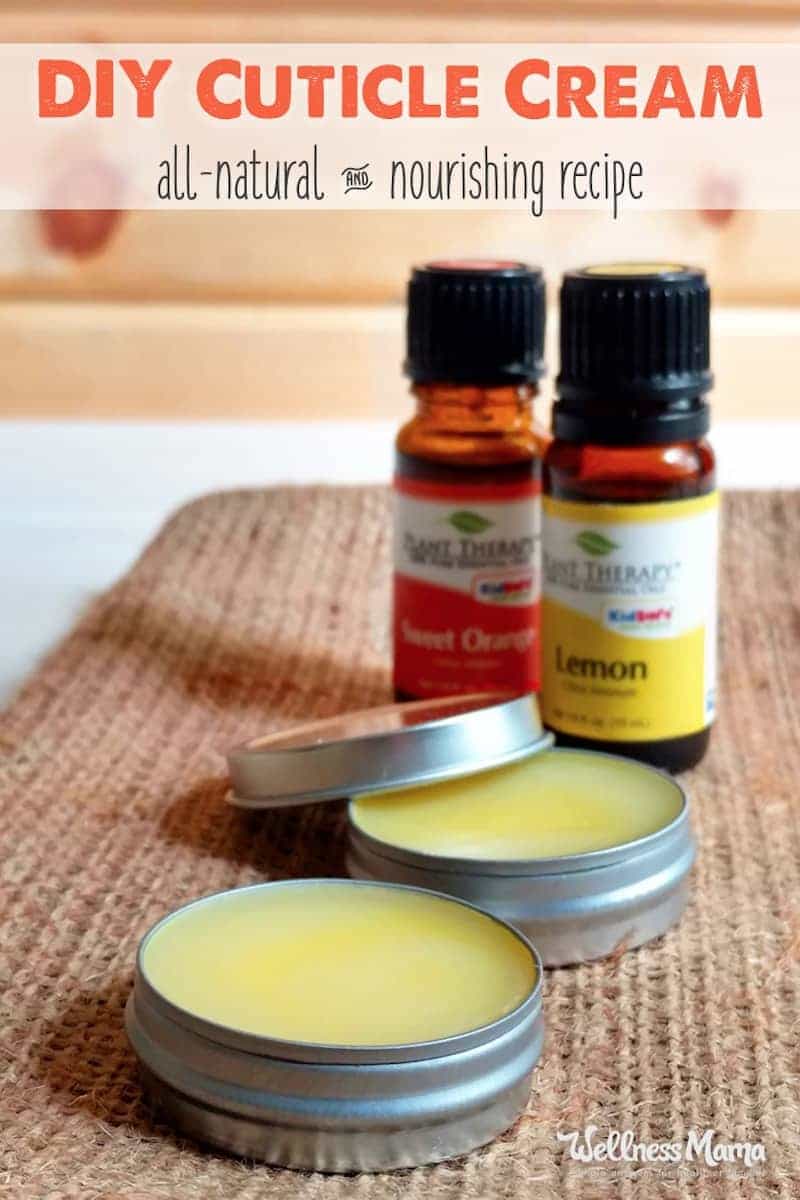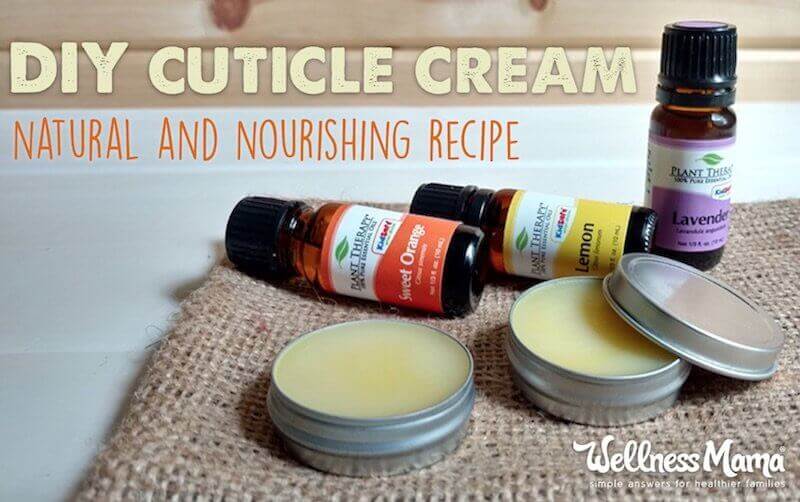Cuticles are one of those things that are easy to overlook. Cover them up with some cute, non-toxic nail polish and carry on, right?
Unfortunately, cuticles can split, peel and even get infected if ignored or mistreated. This natural cuticle cream gives cuticles the love they need and helps avoid or even reverse damaged cuticles.
Why Do We Even Have Cuticles?
Even though small, cuticles serve a big purpose. Cuticles are actually part of the skin and protect the nail bed from damage and infection. They also serve as a barrier for the nail as it grows.
The First Law of Cuticle Care: Moisturize
It’s ok to push cuticles back gently, but cutting them or other harsh treatment can pave the way for damage and infection. Using a cuticle cream on that delicate area is the best option since the protective skin barrier is supposed to stay soft.
I generally avoid nail salons because of the toxic chemicals in the air, but for those who do visit a manicurist, make sure they treat the cuticle gently.
Why Make Natural Cuticle Cream?
I tend to have vitamin E, jojoba oil, essential oils, and other ingredients commonly found in cuticle creams around already since I make many of my beauty products, so it makes sense for me to make it instead of buy it. This recipe only takes 5 minutes of hands-on time to make and a little goes a long way so it doesn’t have to be made often.
There are plenty of store-bought cuticle creams out on the market—even some good natural ones—but even some of the natural creams can contain ingredients I’m not so excited about. For example, this popular and easy to find natural brand lists some fabulous oils and butters, but then there’s canola and soy oil sneaking in the bottom.
Benefits of Natural Cuticle Cream
Sweet almond oil forms the base of this cuticle cream. Since this carrier oil is a moderately light oil, it doesn’t leave the hands feeling so greasy after application. It’s rich in vitamin E, oleic acid, and linoleic acid and is a power emollient to retain moisture around the nail area.
Vitamin E oil has been proven in dermatological studies to improve nail growth and contribute to a healthier nail color.
Jojoba oil is technically a liquid wax that closely mimics sebum, an oily, waxy substance that protects the skin. In addition jojoba draws moisture to the skin and helps the production of the acid mantle that protects skin from harmful bacteria.
Helichrysum oil adds a pleasant scent and contribute to the cream’s soothing properties. Helichrysum is a more expensive essential oil, but well worth having in any natural medicine cabinet. Some have nicknamed it “liquid stitches” because it heals damaged skin so quickly. It’s also naturally antimicrobial and anti-inflammatory.
Citrus essential oils soften the cuticle and help the vitamins and nutrients from the other oils better penetrate the skin. One French study found that lemon essential oil significantly increased both water soluble and oil soluble vitamin absorption by the skin. They also found it increased vitamin E absorption by nine times.
Nourishing and Natural Cuticle Cream Recipe
Recipe yields 1 ounce.
Ingredients
- Heat-safe glass bowl
- Small pot
- 5 drops non-GMO vitamin E oil
- 4 ½ tsp sweet almond oil
- ½ tsp jojoba oil
- 1 tsp beeswax
- 3 drops helichrysum essential oil (can substitute lavender essential oil)
- 5 drops lemon essential oil
- 3 drops sweet orange essential oil (omit if using lavender)
- Small glass jar or tin
Instructions
- Fill the pot halfway with water, and perch the glass bowl on top to make a double boiler.
- In the glass bowl combine the sweet almond oil, jojoba oil, and beeswax. Heat and stir occasionally until the beeswax is thoroughly melted.
- Remove the bowl from the heat and carefully dry the outside of the bowl with a clean towel. This prevents any water from getting into the cuticle cream as its poured.
- Stir in the vitamin E oil and essential oils. Immediately pour the mixture into the container(s) and allow to cool at room temperature until firm.
To Use the Cuticle Cream
- Can be applied over polish or to bare nails, but don’t polish nails right after cuticle treatment as the oils will keep the polish from sticking.
- Massage a tiny amount of the cuticle cream into the nails, cuticles, and skin surrounding the nail.
- A little bit goes a long way. A pea-size drop should adequately cover both hands.
What are your best manicure tips? Have you found an easy, natural way to care for cuticles?



Leave a Reply